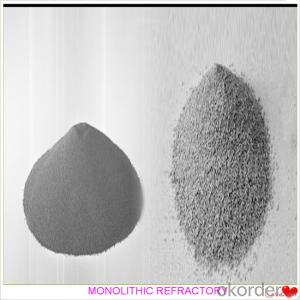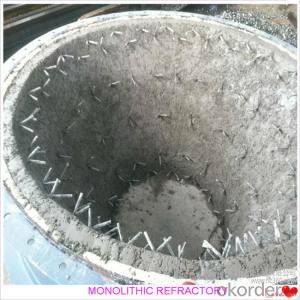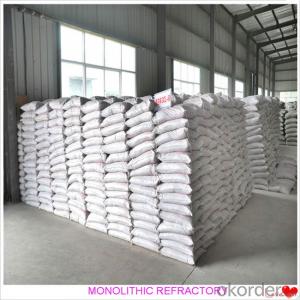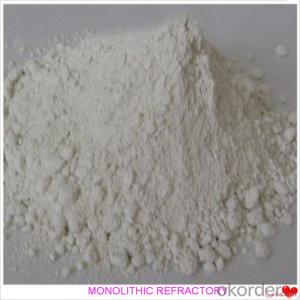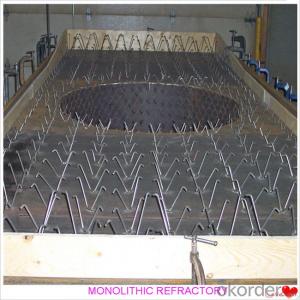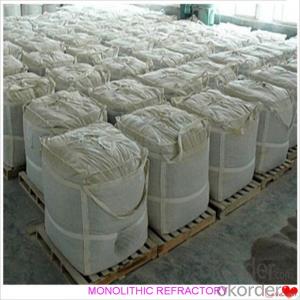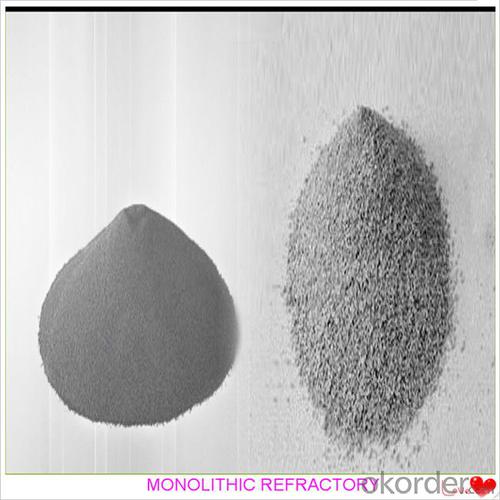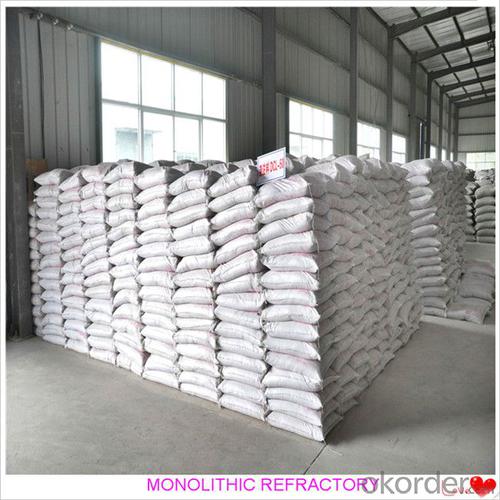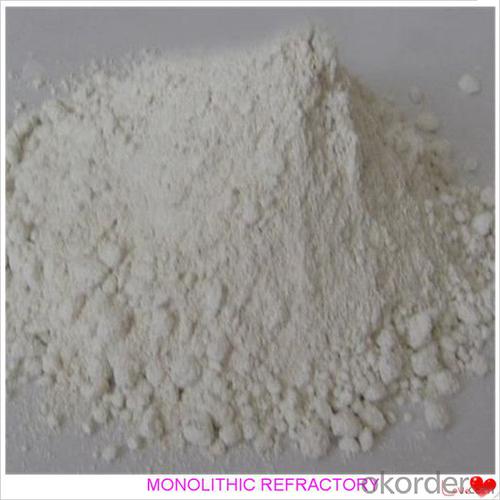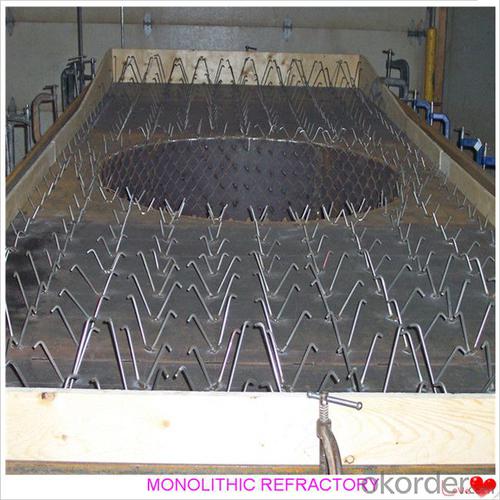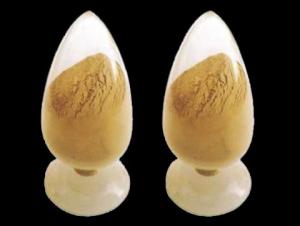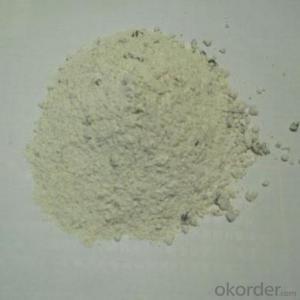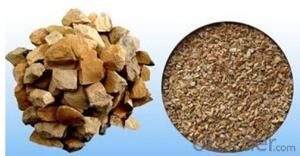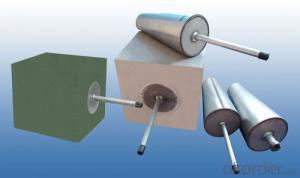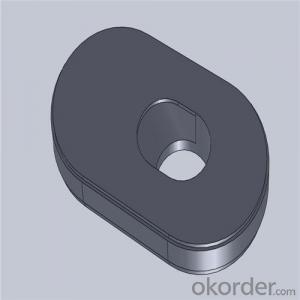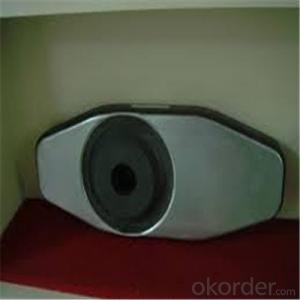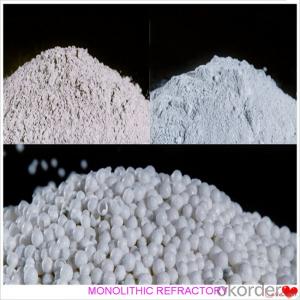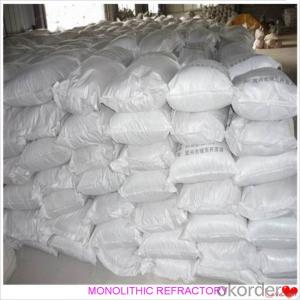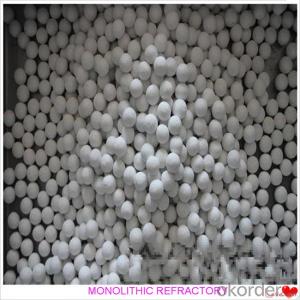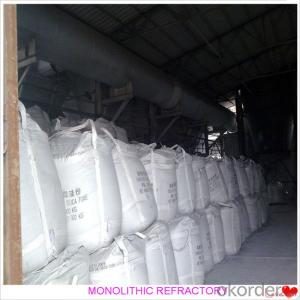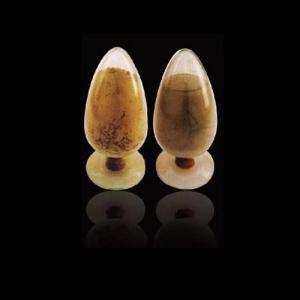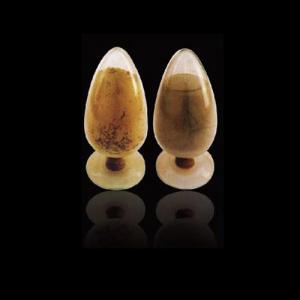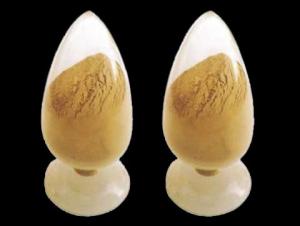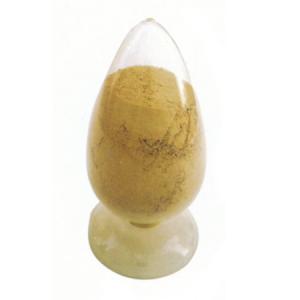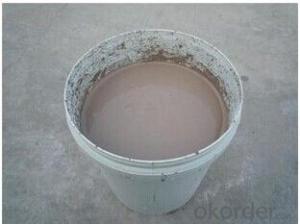Monolithic Refractories for Iron and Steel Industry:Castable Refractory for Fireplace and Industrial Furnace
- Loading Port:
- China main port
- Payment Terms:
- TT or LC
- Min Order Qty:
- 1000 kg
- Supply Capability:
- 3000000 kg/month
OKorder Service Pledge
OKorder Financial Service
You Might Also Like
Castable Refractory for Fireplaces and Industrial Iron and Steel Furnaces
Product Description:
Gunning castable is manufactured according to international standards. The product is famous for its excellent abrasion resistance and low thermal conductivity. Further, these can be provided in different specifications as required by clients. Gunning castables use high purity raw materials and additives as the main material, and are made with superfine powder adding technology.
Product Features:
The material has excellent structural stability and air tightness, and has high physical and chemical properties, and also excellent working ability. If should be used with the same material products.
Product Applications:
Widely used in various kiln linings, such as boilers, blast furnace hot blast stoves, heating furnaces, ceramic kilns, heat treatment furnaces, incinerators, re-circulating fluidized bed furnaces and chemical industry and construction industry furnaces.
Product Specifications:
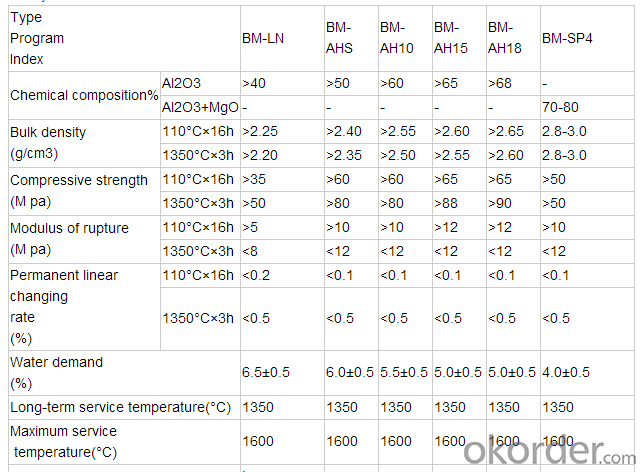
Product Images:
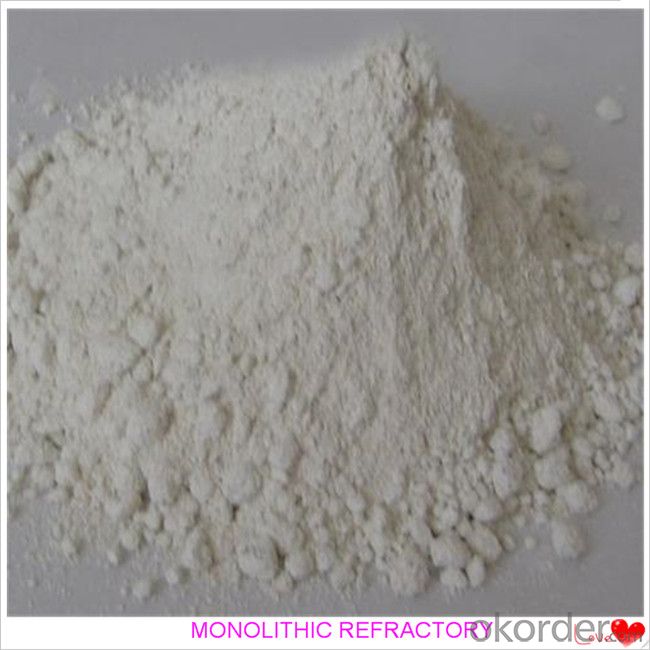
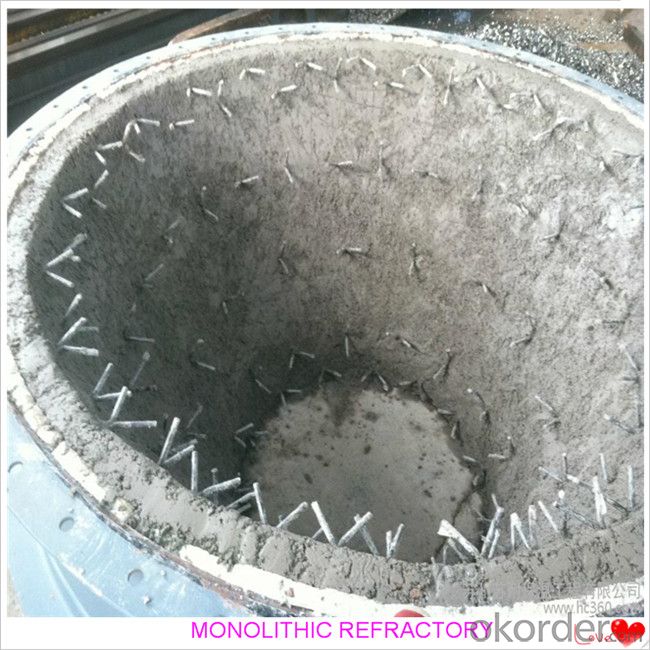
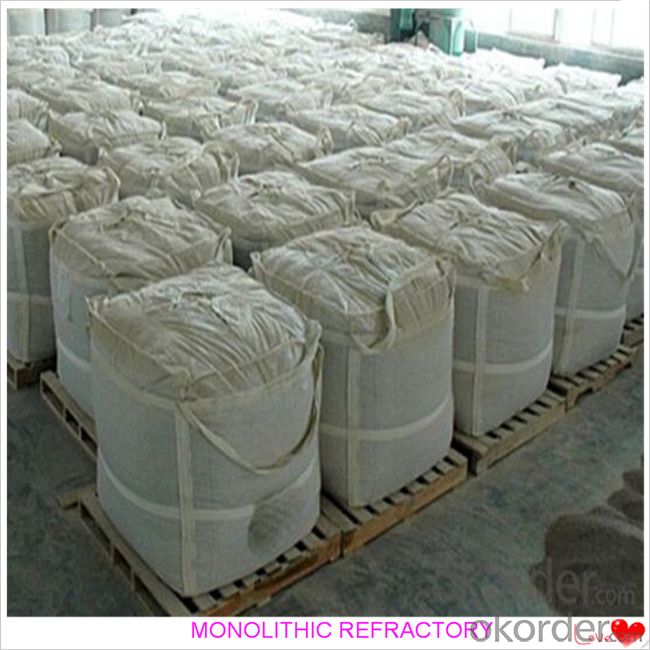

FAQ:
Q1: Why buy Materials & Equipment from OKorder.com?
A1: All products offered by OKorder.com are carefully selected from China's most reliable manufacturing enterprises. Through its ISO certifications, OKorder.com adheres to the highest standards and a commitment to supply chain safety and customer satisfaction.
Q2: How do we guarantee the quality of our products?
A2: We have established an advanced quality management system which conducts strict quality tests at every step, from raw materials to the final product. At the same time, we provide extensive follow-up service assurances as required.
- Q: How do monolithic refractories enhance the performance and longevity of furnaces?
- Monolithic refractories play a crucial role in enhancing the performance and longevity of furnaces. These specialized materials are designed to withstand high temperatures, extreme thermal shock, and harsh chemical environments, making them ideal for lining furnaces. Firstly, monolithic refractories provide excellent insulation properties, ensuring minimal heat loss and maximum energy efficiency. By reducing heat loss, they help maintain a consistent temperature inside the furnace, allowing for more effective and efficient heating processes. This insulation also prevents the external environment from interfering with the internal temperature, ensuring stable and controlled heating operations. Secondly, these refractories have high resistance to thermal shock. Furnaces often undergo rapid temperature changes as they heat and cool down. Monolithic refractories are capable of handling these abrupt temperature fluctuations without cracking or spalling, thereby preserving the integrity of the furnace lining. This resistance to thermal shock also translates into improved safety, as it reduces the risk of sudden failure or damage to the furnace structure. Furthermore, monolithic refractories possess excellent chemical resistance, making them highly durable in aggressive environments. Furnaces are exposed to various corrosive gases, molten metals, and chemical reactions. The refractories' ability to withstand these harsh conditions ensures that the furnace lining remains intact and protects the underlying structure. This resistance to chemical attack also prevents contamination of the heated materials, ensuring the quality of the final product. Additionally, monolithic refractories offer easy installation and repair. Unlike traditional brick refractories, which require time-consuming and labor-intensive construction, monolithic refractories are typically cast or gunned into place, allowing for quick and efficient installation. Moreover, if any damage occurs, these materials can be easily patched or repaired, minimizing downtime and ensuring continuous furnace operation. In summary, monolithic refractories greatly enhance the performance and longevity of furnaces by providing excellent insulation, resistance to thermal shock, chemical durability, and ease of installation and repair. By choosing the appropriate monolithic refractory material for specific furnace applications, manufacturers can significantly improve furnace efficiency, maintain consistent temperatures, ensure safety, and prolong the lifespan of their furnaces.
- Q: How do monolithic refractories resist abrasion in the iron and steel industry?
- Monolithic refractories in the iron and steel industry resist abrasion through their inherent properties and design features. These refractories are formulated with high levels of abrasion-resistant materials such as alumina, silicon carbide, and zirconia, which provide excellent resistance to wear and erosion caused by the movement of molten metal, slag, and other abrasive materials in the production processes. Additionally, the monolithic nature of these refractories eliminates the presence of joints and gaps, reducing weak points and enhancing their ability to withstand abrasion.
- Q: How do monolithic refractories help in reducing energy consumption in iron and steel production?
- Monolithic refractories play a vital role in the reduction of energy consumption in iron and steel production. These refractories are heat-resistant materials utilized to line the walls and floors of furnaces and other high-temperature equipment. One of the main ways monolithic refractories aid in energy reduction is through their exceptional thermal insulation properties. These materials possess low thermal conductivity, which effectively minimizes heat loss from the furnace or equipment. By keeping heat loss to a minimum, monolithic refractories help maintain a consistent and high temperature inside the furnace, resulting in enhanced energy efficiency. This allows for better utilization of generated heat, reducing the need for additional energy input and ultimately leading to energy savings. Additionally, monolithic refractories exhibit high thermal stability and resistance to thermal shock. This enables them to withstand the extreme temperatures and rapid temperature changes frequently encountered in iron and steel production processes. By having a robust and dependable lining, these refractories prevent heat leakage and ensure efficient heat transfer to desired areas, reducing energy wastage. Furthermore, monolithic refractories contribute to energy reduction by resisting chemical attack and erosion. In iron and steel production, furnaces and equipment linings are exposed to aggressive substances like molten metal, slag, and gases. Monolithic refractories exhibit excellent resistance to these corrosive elements, prolonging their lifespan and reducing the need for frequent repairs or replacements. This not only saves energy required for maintenance but also avoids production interruptions and associated energy losses. In conclusion, monolithic refractories aid in the reduction of energy consumption in iron and steel production by providing effective thermal insulation, withstanding extreme temperatures, and resisting chemical attack. By optimizing heat management and extending equipment durability, these refractories significantly contribute to energy efficiency and cost savings in the industry.
- Q: What are the key differences between acidic and basic monolithic refractories?
- The chemical compositions and behaviors in varying environments distinguish acidic and basic monolithic refractories. Acidic refractories mainly consist of acidic oxides like silica or alumina. These materials exhibit high resistance to acidic environments and find common usage in industries where contact with acidic gases or liquids occurs. They can endure high temperatures and resist chemical erosion, but are unsuitable for basic or alkaline conditions as they can lose effectiveness by reacting with basic compounds. Conversely, basic monolithic refractories comprise basic oxides such as magnesia or dolomite. These materials possess high resistance to basic or alkaline environments and are commonly used in industries where contact with basic compounds like lime or cement is prevalent. Basic refractories can endure high temperatures and resist chemical erosion from basic compounds, but are not suitable for acidic conditions as they may react and lose effectiveness. Regarding physical properties, acidic monolithic refractories tend to have higher melting points and better thermal shock resistance compared to basic monolithic refractories. This is due to the higher melting points of acidic oxides and their ability to form stable silicate or aluminate structures at high temperatures. On the other hand, basic monolithic refractories generally exhibit higher density and better resistance to penetration by molten materials. In conclusion, acidic and basic monolithic refractories differ in their chemical compositions and behaviors in various environments. Acidic refractories are suitable for acidic conditions, possess higher melting points, and exhibit better thermal shock resistance. Basic refractories, on the other hand, are suitable for basic conditions, have higher density, and offer superior resistance to penetration by molten materials.
- Q: How are monolithic refractories used in the repair and maintenance of ladle and tundish linings?
- Monolithic refractories, widely utilized in the steel industry, are a specific type of refractory material employed for the repair and maintenance of ladle and tundish linings. These linings, integral to the transportation and treatment of molten metal during the steelmaking process, can deteriorate over time when exposed to high temperatures and corrosive conditions. This deterioration poses various issues, including heat loss, contamination of the molten metal, and reduced lifespan of the refractory lining. To tackle these problems, monolithic refractories serve as effective repair and maintenance materials. Typically composed of different refractory aggregates, binders, and additives, monolithic refractories are available in various forms like castables, gunning mixes, and ramming mixes. These materials are designed for easy application and shaping, conforming to the specific geometry and dimensions of the ladle or tundish lining. During the repair process, damaged sections of the lining are removed, and monolithic refractories are then applied. Castables can be poured and vibrated into place, while gunning mixes can be sprayed using a high-pressure gunning machine. On the other hand, ramming mixes are manually compacted into the lining using a ramming tool. Monolithic refractories offer several advantages when it comes to the repair and maintenance of ladle and tundish linings. Firstly, their flexibility ensures easy installation and shaping, resulting in a snug fit to the lining. This maximizes the effectiveness of the refractory lining in preventing heat loss and maintaining the integrity of the ladle or tundish. Secondly, monolithic refractories exhibit exceptional resistance to thermal shock and chemical attack. This durability enables them to withstand the harsh conditions encountered in ladles and tundishes. Even when subjected to repeated heating and cooling cycles, they remain intact without cracking or spalling, providing long-lasting protection to the lining. Lastly, monolithic refractories can be easily repaired and replaced as needed. The application and removal processes are relatively straightforward, facilitating efficient maintenance of ladle and tundish linings. This minimizes downtime and ensures the overall productivity of the steelmaking process. In conclusion, monolithic refractories play a vital role in the repair and maintenance of ladle and tundish linings. Their easy application, exceptional resistance to thermal shock and chemical attack, and ease of repair make them ideal materials for extending the lifespan and optimizing the performance of these linings in the steel industry.
- Q: How do monolithic refractories enhance the efficiency of reheating furnaces?
- Monolithic refractories enhance the efficiency of reheating furnaces by providing better thermal insulation, reducing heat loss, and improving the overall heat transfer within the furnace. These refractories have excellent resistance to high temperatures and thermal shock, allowing them to withstand extreme conditions for prolonged periods. By minimizing heat loss and maintaining a consistent temperature, they ensure that the reheating process is more energy-efficient, resulting in reduced fuel consumption and increased productivity.
- Q: How do monolithic refractories contribute to the overall reliability of iron and steel processes?
- Monolithic refractories play a significant role in enhancing the overall reliability of iron and steel processes. These refractories are specifically designed to withstand extreme temperatures and harsh conditions found in iron and steel manufacturing environments. One key contribution of monolithic refractories is their ability to provide superior insulation. They have low thermal conductivity, which significantly reduces heat loss from the furnace or kiln. This insulation property allows for efficient energy usage and helps maintain stable operating conditions, leading to consistent and reliable production. Additionally, monolithic refractories offer excellent resistance to chemical attacks from molten metals, slag, and other corrosive substances. They can withstand the high alkalinity and high temperature of molten iron and steel, preventing any damage to the refractory lining. This resistance ensures the longevity of the refractory material, minimizing the need for frequent maintenance and replacement, thus contributing to the overall reliability of the iron and steel processes. Moreover, monolithic refractories exhibit good mechanical strength and stability, even at elevated temperatures. This strength allows them to withstand the mechanical stresses and strains exerted during the iron and steel manufacturing processes, such as thermal cycling, mechanical impact, and abrasion. By maintaining their structural integrity, monolithic refractories prevent the formation of cracks or spalling, which could lead to downtime or even catastrophic failure. This reliability ensures uninterrupted operations and reduces the risk of costly shutdowns. Furthermore, monolithic refractories offer flexibility in terms of installation and repair. They can be easily shaped and applied to various furnace shapes and sizes, allowing for efficient lining construction. Additionally, monolithic refractories can be repaired or patched quickly, minimizing downtime and maintaining the operational reliability of the iron and steel processes. In conclusion, monolithic refractories contribute to the overall reliability of iron and steel processes by providing superior insulation, resistance to chemical attacks, mechanical strength, and flexibility in installation and repair. By ensuring consistent performance, durability, and reduced maintenance requirements, monolithic refractories play a crucial role in optimizing the efficiency and reliability of iron and steel manufacturing operations.
- Q: How do monolithic refractories improve the efficiency of ladle and tundish drying systems?
- Monolithic refractories improve the efficiency of ladle and tundish drying systems by providing superior thermal insulation, reduced heat loss, and increased resistance to thermal shock. These refractories have high thermal conductivity and low heat capacity, enabling faster and more uniform heating of the ladle and tundish. Additionally, their monolithic nature eliminates joints and seams that could lead to heat leakage, ensuring better heat retention and improved energy efficiency. The enhanced thermal properties of monolithic refractories contribute to quicker drying times and reduced energy consumption in ladle and tundish drying processes, ultimately improving overall system efficiency.
- Q: How do monolithic refractories improve the efficiency of ladle and tundish lining systems?
- Monolithic refractories improve the efficiency of ladle and tundish lining systems by providing superior thermal insulation, excellent resistance to thermal shock, and higher mechanical strength compared to traditional brick or castable linings. This results in reduced heat loss, improved temperature control, and increased refractory life, ultimately leading to higher productivity and cost savings in steelmaking operations.
- Q: How do monolithic refractories improve energy efficiency in the iron and steel industry?
- Monolithic refractories improve energy efficiency in the iron and steel industry by providing better insulation and reducing heat loss. They have lower thermal conductivity compared to traditional refractory bricks, which means less heat is conducted through the lining of the furnaces or kilns. This leads to reduced energy consumption and improved thermal efficiency. Additionally, monolithic refractories offer better resistance to thermal shock, minimizing the need for frequent repairs or replacements, thereby saving energy and reducing downtime.
Send your message to us
Monolithic Refractories for Iron and Steel Industry:Castable Refractory for Fireplace and Industrial Furnace
- Loading Port:
- China main port
- Payment Terms:
- TT or LC
- Min Order Qty:
- 1000 kg
- Supply Capability:
- 3000000 kg/month
OKorder Service Pledge
OKorder Financial Service
Similar products
Hot products
Hot Searches
Related keywords
